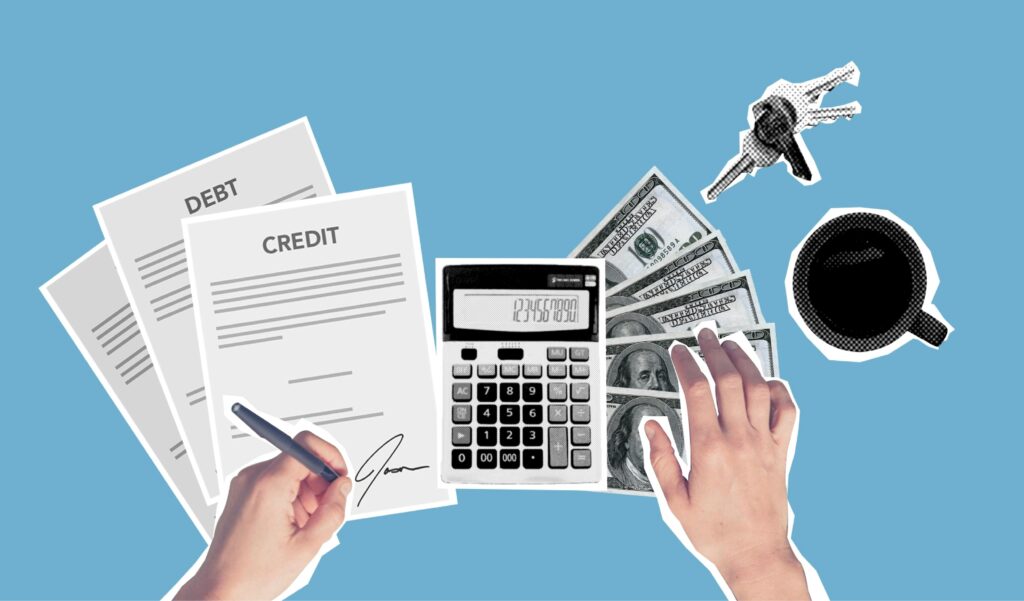Learn the differences between subsidized and unsubsidized loans, including key features, eligibility criteria, pros and cons, and application processes. This comprehensive guide will help you make informed decisions about your student loan options.
Introduction
Navigating the world of student loans can feel like wandering through a maze. With terms like “subsidized” and “unsubsidized” being thrown around, it’s easy to get confused. But don’t worry, we’re here to clear things up. Understanding the differences between subsidized and unsubsidized loans is crucial in making informed decisions about your education financing. Let’s dive in!

What Are Subsidized Loans?
Definition and Overview
Subsidized loans are a type of federal student loan where the government pays the interest while you’re in school at least half-time, during the grace period, and during any deferment periods. This means you save money in the long run because the interest doesn’t accrue during these times.
Key Features
- Interest Paid by Government: The most significant benefit of subsidized loans is that the government covers the interest while you’re in school and during deferment periods.
- Need-Based: Subsidized loans are awarded based on financial need.
- Lower Loan Limits: Typically, there are lower borrowing limits compared to unsubsidized loans.
Eligibility Criteria
- FAFSA: You must fill out the Free Application for Federal Student Aid (FAFSA).
- Financial Need: Demonstrated financial need is required.
- Enrollment Status: Must be enrolled at least half-time in an eligible program.
What Are Unsubsidized Loans?
Definition and Overview
Unsubsidized loans are federal student loans that are not based on financial need. Unlike subsidized loans, you are responsible for paying all the interest, including while you are in school and during grace and deferment periods.
Key Features
- Interest Accumulation: Interest starts accruing from the moment the loan is disbursed.
- No Need Requirement: Available to both undergraduate and graduate students, regardless of financial need.
- Higher Loan Limits: Generally, higher borrowing limits compared to subsidized loans.
Eligibility Criteria
- FAFSA: You still need to complete the FAFSA.
- Enrollment Status: Must be enrolled at least half-time in an eligible program.
- No Financial Need Requirement: Available regardless of financial need.
Differences Between Subsidized and Unsubsidized Loans
Interest Accumulation
- Subsidized Loans: Interest is paid by the government while you’re in school and during deferment periods.
- Unsubsidized Loans: Interest accrues from the time the loan is disbursed and continues to accumulate during school, grace, and deferment periods.
Repayment Terms
- Subsidized Loans: Generally have a six-month grace period after leaving school before repayment begins.
- Unsubsidized Loans: Similar grace period, but interest accrues during this time.
Borrowing Limits
- Subsidized Loans: Lower annual and aggregate borrowing limits.
- Unsubsidized Loans: Higher limits, allowing you to borrow more over your educational career.
Pros and Cons of Subsidized Loans
Advantages
- Government Pays Interest: Significant savings over time.
- Need-Based: Helps students who need it the most.
- Lower Interest Rates: Often have lower interest rates compared to private loans.
Disadvantages
- Lower Borrowing Limits: This may not cover all educational expenses.
- Need-Based: Not available to everyone.
Pros and Cons of Unsubsidized Loans
Advantages
- Higher Borrowing Limits: Can cover more educational expenses.
- No Need Requirement: Available to all students.
- Flexibility: Can be used for both undergraduate and graduate education.
Disadvantages
- Interest Accumulation: Interest accrues from day one.
- Higher Cost: This can be more expensive over time due to interest.
How to Apply for Subsidized Loans
Application Process
- Complete the FAFSA: This is your gateway to all federal student aid.
- Review Your SAR: Your Student Aid Report will detail your financial aid eligibility.
- Accept Your Loan: Once offered, you can accept the loan through your school’s financial aid office.
Important Deadlines
- FAFSA Deadline: Typically June 30th for the upcoming academic year.
- School Deadlines: Vary by institution, so check with your school.
How to Apply for Unsubsidized Loans
Application Process
- Complete the FAFSA: Even though these loans are not need-based, you still need to fill out the FAFSA.
- Review Your SAR: Check your eligibility and the loan amount offered.
- Accept Your Loan: Accept the loan through your school’s financial aid office.

Important Deadlines
- FAFSA Deadline: June 30th for the upcoming academic year.
- School Deadlines: Vary, so always verify with your institution.
Managing Your Loans
Tips for Staying Organized
- Keep Track of Documents: Maintain a folder (digital or physical) for all loan-related documents.
- Set Reminders: Use calendar reminders for payment due dates and important deadlines.
- Budgeting: Create a budget that includes your loan repayments.
Repayment Strategies
- Start Early: If possible, start making interest payments while still in school.
- Consolidate Loans: Consider consolidating multiple loans into a single payment.
- Income-Driven Repayment Plans: These plans can make monthly payments more affordable based on your income.
Loan Forgiveness Programs
Overview
Loan forgiveness programs can eliminate some or all of your student loan debt if you meet specific criteria.
Eligibility Criteria
- Public Service Loan Forgiveness (PSLF): Available to those working in public service jobs.
- Teacher Loan Forgiveness: For teachers who work in low-income schools.
- Income-Driven Repayment Forgiveness: Remaining balance forgiven after 20-25 years of qualifying payments.
Impact on Credit Score
How Loans Affect Credit
- Positive Impact: Making on-time payments can build your credit score.
- Negative Impact: Missing payments or defaulting can significantly harm your credit.
Tips for Maintaining a Good Credit Score
- Pay on Time: Always make your loan payments on time.
- Monitor Your Credit: Regularly check your credit report for accuracy.
- Manage Debt: Keep your overall debt levels manageable.
Frequently Asked Questions About Subsidized Loans
1. What happens if I can’t make my loan payments?
You can apply for deferment or forbearance to temporarily postpone payments.
2. Can I lose my subsidized loan status?
Yes, if you fail to meet the enrollment requirements or other eligibility criteria.
3. Are there limits to how much I can borrow?
Yes, there are annual and aggregate limits based on your year in school.
4. Do subsidized loans have lower interest rates?
Often, yes. They generally have lower interest rates compared to unsubsidized loans.
5. How is financial need determined?
Financial need is determined by the information you provide on the FAFSA.
Frequently Asked Questions About Unsubsidized Loans
1. Do I need a cosigner for unsubsidized loans?
No, federal unsubsidized loans do not require a cosigner.
2. Can interest be deferred on unsubsidized loans?
Interest accrues during deferment periods but can be capitalized.
3. What are the borrowing limits?
Higher than subsidized loans, but there are still annual and aggregate limits.
4. Can I apply for both subsidized and unsubsidized loans?
Yes, you can receive both types of loans if you meet the eligibility requirements.
5. How do I pay interest while in school?
You can make interest payments while in school to avoid capitalization.
Comparing Subsidized and Unsubsidized Loans
Choosing between subsidized and unsubsidized loans depends on your financial situation, educational needs, and future plans. Subsidized loans are beneficial for those with financial needs and looking to save on interest. Unsubsidized loans provide higher borrowing limits and are accessible regardless of financial need.

Conclusion
Understanding the nuances between subsidized and unsubsidized loans can significantly impact your financial future. By making informed decisions and staying on top of your repayment plans, you can manage your student debt effectively and focus on achieving your educational and career goals.
